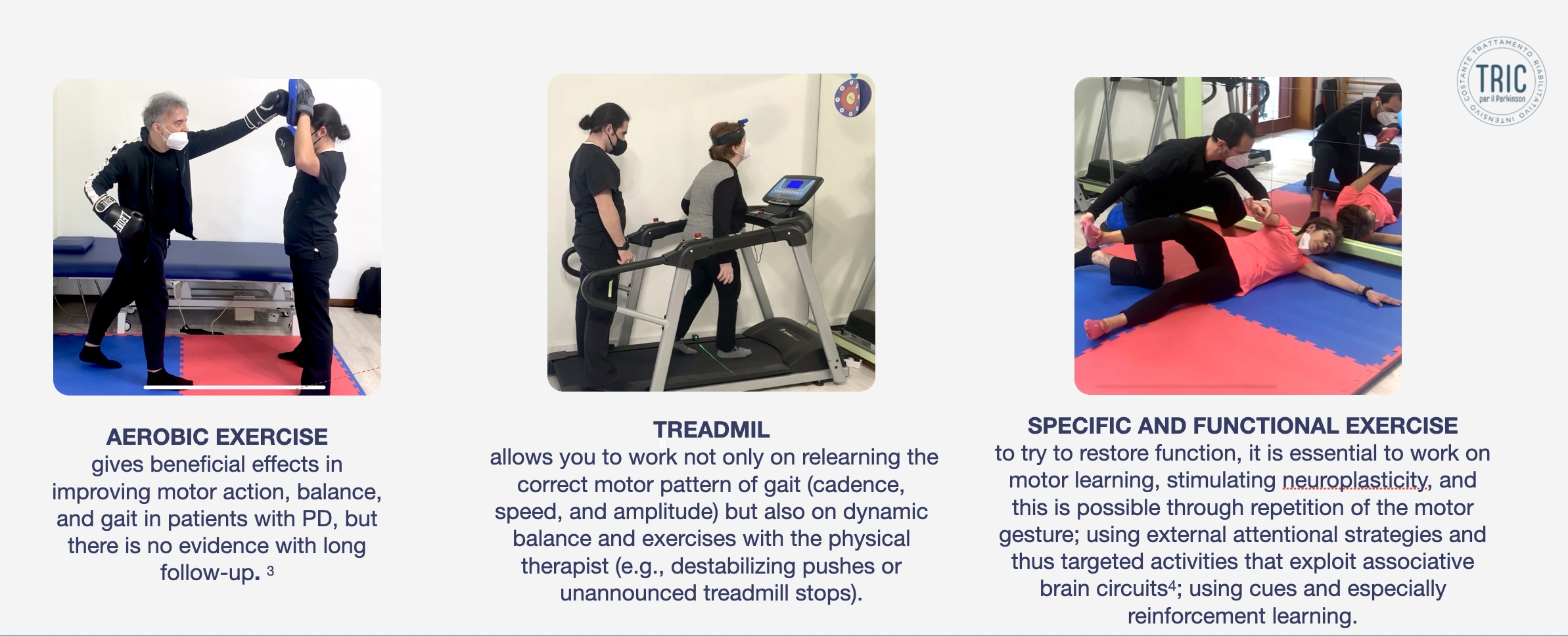Christian Gelao [Istituti Clinici Scientifici Maugeri IRCCS, Neurorehabilitation Unit of Bari Institute, Italy]
F. Angeloro [Associazione Parkinson Puglia ODV BARI]
C. Palmirotta [Istituti Clinici Scientifici Maugeri IRCCS, Laboratory of Neuropsychology, Bari Institute, Italy]
S. Tagliente [Istituti Clinici Scientifici Maugeri IRCCS, Laboratory of Neuropsychology, Bari Institute, Italy]
G. Lagravinese [Istituti Clinici Scientifici Maugeri IRCCS, Laboratory of Neuropsychology, Bari Institute, Italy]
S. Aresta [Istituti Clinici Scientifici Maugeri IRCCS, Neurorehabilitation Unit of Bari Institute, Italy]
P. Battista [Istituti Clinici Scientifici Maugeri IRCCS, Laboratory of Neuropsychology, Bari Institute, Italy] [Global Brain Health Institute (GBHI), University of California San Francisco, CA, USA.]
P. Fiore [Istituti Clinici Scientifici Maugeri IRCCS, Neurorehabilitation Unit of Bari Institute, Italy] [Department of Physical and Rehabilitation Medicine, University of Foggia, Foggia, Italy]
B. Minafra [Istituti Clinici Scientifici Maugeri IRCCS, Neurorehabilitation Unit of Bari Institute, Italy]
The scientific literature widely supports the importance of exercise as a component of Parkinson’s disease (PD) patients‘ lifestyle. According to some studies, exercise could be considered as a disease-modifying factor. Exercise associated with aerobic and resistance training could result in positive effects by increasing the rehabilitation outcome of patients with PD. 1 Structured therapeutic approach to exercise improved patients’ motor performances; however, this improvement was maintained for a limited time period.2
Thus, the purpose of this study is to evaluate whether consistent rehabilitation treatment can lead to improved motor performances and quality of life over a longer period of time.
Twenty consecutive patients with PD were enrolled with stable dopaminergic therapy for at least 4 weeks.
Patients who were participating in other rehabilitation programs, with visual and hearing impairment, with DBS, or with internist comorbidities unable to support intense physical exercise were excluded.
Patients underwent Intensive and Constant Rehabilitation Treatment (TRIC), performing 36 training sessions, for 12 consecutive weeks. Each training session lasted 60 minutes, according to a progression-modulated schedule.
All patients underwent neurological assessment at baseline (T0) and after 3 months (T1). Assessments were performed in ON therapy.
At T0 and T1, the following assessment scales were administered: MDS-UPDRS III, PDQ-39-IT, 6MWT, TUG, BBS, Conley Scale; the time required to perform postural transitions was also measured.
Our sample was characterized as follows: age 75.55±8.99 years, H&Y between 1 and 2.5, MDS-UPDRS-III 25.8±9.88.
All patients completed all phases of the study.
At T1, all patients achieved significant improvement on all rating scales (p<0.001), also reduced the risk of falls with a positive trend.
The results of this pilot study indicate that physical activity can result in sustained improvement of specific impaired motor functions in individuals with Parkinson’s disease. Adherence to treatment and the absence of droup out demonstrates the feasibility of the rehabilitation program. However, longer follow-up is needed to demonstrate the long-term effectiveness of TRIC.
1 – J. Eric Ahlskog. (2011) Does Vigorous Exercise Have a Neuroprotective Effect in Parkinson’s? Neurology® 2011;77:288–294
2 – Kim, Yumi; Lai, Byron; Mehta, Tapan; Thirumalai, Mohanraj; Padalabalanarayanan, Sangeetha; Rimmer, James H.; Motl, Robert W. (2019). Exercise Training Guidelines for Multiple Sclerosis, Stroke, and Parkinson Disease. American Journal of Physical Medicine & Rehabilitation, 98(7), 613–621.
3 – Shu, H.-F., Yang, T., Yu, S.-X., Huang, H.-D., Jiang, L.-L., Gu, J.-W., & Kuang, Y.-Q. (2014). Aerobic Exercise for Parkinson’s Disease: A Systematic Review and Meta-Analysis of Randomized Controlled Trials. PLoS ONE, 9(7), e100503.doi:10.1371/journal.pone.0100503
4 – Redgrave, Peter; Rodriguez, Manuel; Smith, Yoland; Rodriguez-Oroz, Maria C.; Lehericy, Stephane; Bergman, Hagai; Agid, Yves; DeLong, Mahlon R.; Obeso, Jose A. (2010). Goal-directed and habitual control in the basal ganglia: implications for Parkinson’s disease. Nature, 11(11), 760–772.doi:10.1038/nrn2915
